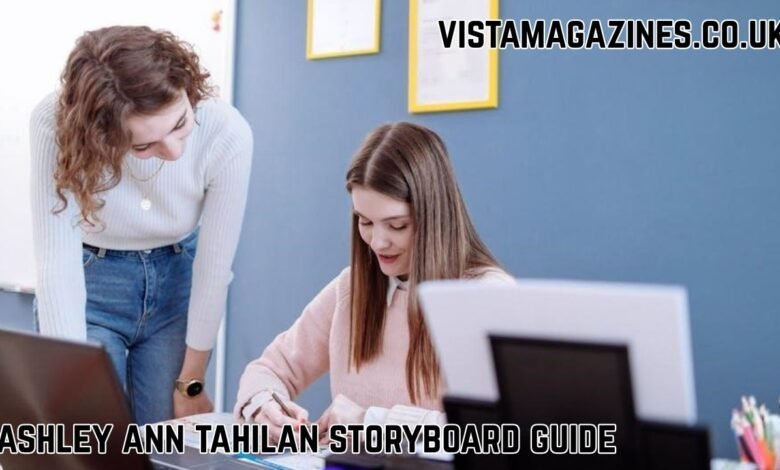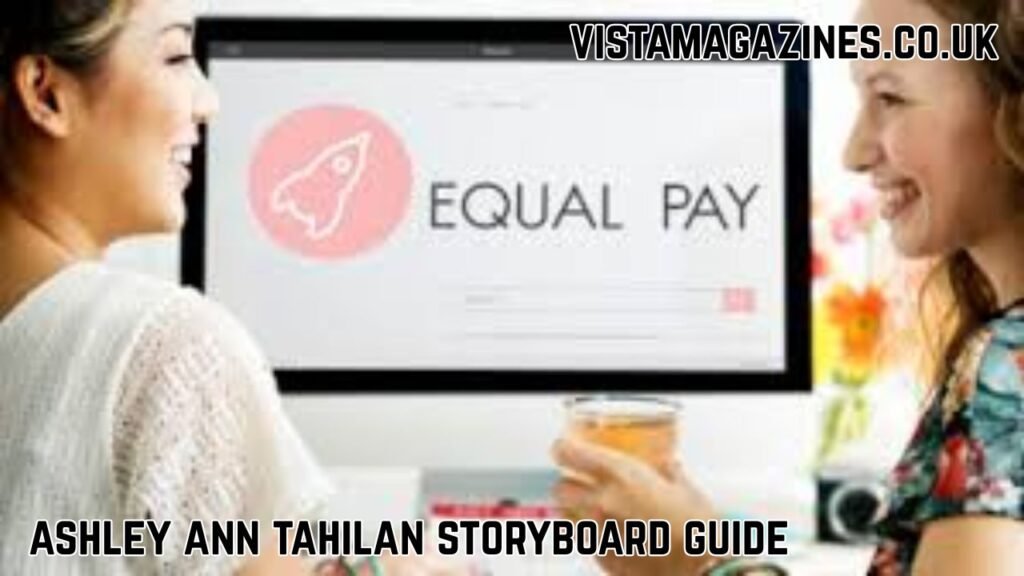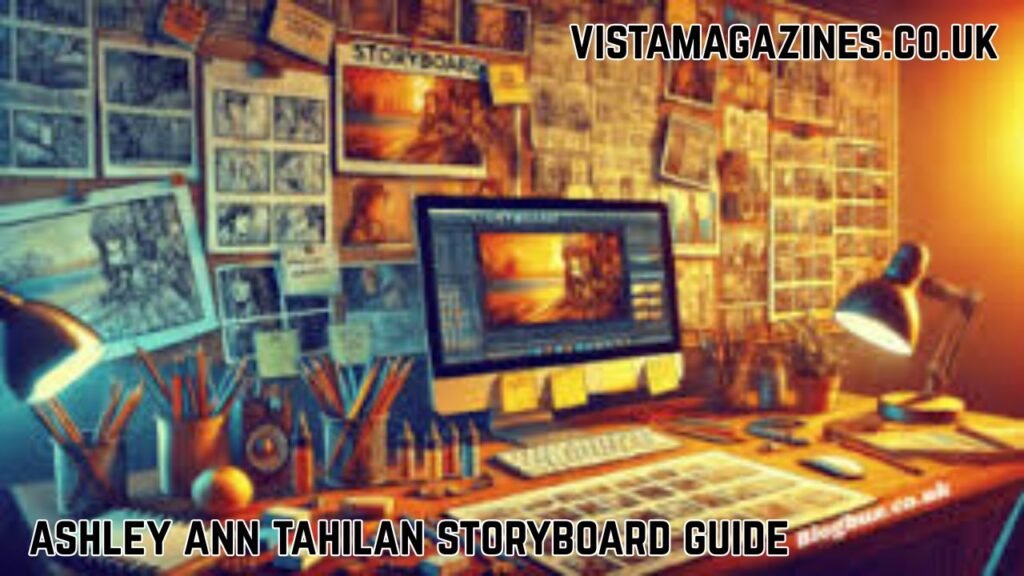Ashley Ann Tahilan Storyboard Guide: A Complete Masterclass in Visual Storytelling

Introduction to the Ashley Ann Tahilan Storyboard Guide
The Ashley Ann Tahilan storyboard guide has quickly become a valuable resource for artists, filmmakers, and storytellers who want to bring their ideas to life through powerful visuals. Whether you are a beginner who wants to learn the fundamentals of storyboarding or a professional looking to refine your visual narrative skills, the Ashley Ann Tahilan storyboard guide provides structured lessons, examples, and creative exercises that make complex concepts simple to grasp.
At its core, the Ashley Ann Tahilan storyboard guide isn’t just about drawing — it’s about visual thinking, narrative flow, and cinematic expression. It helps creators transform written scripts or ideas into cohesive sequences that communicate emotions, pacing, and action effectively.
Who Is Ashley Ann Tahilan?
Before diving deeper into the Ashley Ann Tahilan storyboard guide, it’s essential to know about the person behind it. Ashley Ann Tahilan is a creative professional, artist, and educator recognized for her innovative approach to visual storytelling. With a background in animation and film production, she brings a multidisciplinary perspective that resonates with aspiring storytellers worldwide.
Through workshops, online content, and digital tutorials, Ashley Ann Tahilan has built a reputation as a mentor who bridges the gap between imagination and execution. The Ashley Ann Tahilan storyboard guide is a culmination of her experience — a structured framework designed to help creators master the art of story visualization.
Understanding Storyboards and Their Importance

One of the first lessons in the Ashley Ann Tahilan storyboard guide focuses on understanding the purpose of storyboards. Storyboards act as visual blueprints — they guide directors, animators, and production teams in executing a scene or an entire film. By sketching out key moments, artists can visualize how each shot transitions to the next, ensuring that pacing, emotion, and perspective are all aligned.
The Ashley Ann Tahilan storyboard guide emphasizes that good storyboards are not just about artistry; they’re about clarity. Even rough sketches can effectively communicate motion, composition, and mood if done with intent. This principle allows both professionals and students to focus on storytelling rather than perfectionism.
Foundations of the Ashley Ann Tahilan Storyboard Guide
The Ashley Ann Tahilan storyboard guide is built around a few key pillars:
- Narrative Understanding – Breaking down scripts into scenes and sequences.
- Composition Techniques – Using framing, perspective, and depth to enhance emotion.
- Timing and Pacing – Controlling rhythm and visual tempo.
- Character Acting – Bringing life and authenticity to animated or live-action sequences.
- Cinematic Language – Applying camera movements, transitions, and visual motifs.
Each section of the Ashley Ann Tahilan storyboard guide includes detailed exercises, examples, and practical applications that help artists strengthen both technical and creative skills.
Developing Visual Thinking
A central theme of the Ashley Ann Tahilan storyboard guide is visual thinking — the ability to translate abstract ideas into clear images. Many aspiring filmmakers struggle to visualize scenes from written scripts, but Ashley Ann Tahilan breaks down this challenge into manageable steps.
Through her guide, creators learn to analyze emotion, intent, and subtext before sketching. The Ashley Ann Tahilan storyboard guide teaches users how to see stories in terms of light, space, and movement rather than just dialogue and description.
Scene Composition and Shot Design
The Ashley Ann Tahilan storyboard guide dedicates multiple chapters to the art of composition. Each frame in a storyboard serves as a miniature cinematic shot, and Ashley Ann Tahilan teaches how to design shots that guide the viewer’s eye naturally.
She introduces techniques such as:
- The Rule of Thirds – Creating balance and focus.
- Leading Lines – Drawing attention to key subjects.
- Foreground, Middleground, Background – Establishing spatial depth.
- Silhouette and Lighting – Defining form and atmosphere.
By following the Ashley Ann Tahilan storyboard guide, artists learn how to craft dynamic frames that not only look appealing but also serve the emotional and narrative purpose of each scene.
Understanding Camera Movements
Another highlight of the Ashley Ann Tahilan storyboard guide is its detailed breakdown of camera movements. Storyboards should reflect the visual rhythm of a film, and Ashley Ann Tahilan explains how to simulate pan, tilt, zoom, and tracking shots through sequential panels.
Each movement tells a story — a slow zoom might build tension, while a quick pan can convey chaos. The Ashley Ann Tahilan storyboard guide trains artists to think like cinematographers, ensuring that every visual choice enhances storytelling.
Character Emotion and Performance
In storytelling, characters are the emotional anchors of every scene. The Ashley Ann Tahilan storyboard guide provides step-by-step exercises for visualizing expressions, gestures, and body language. Through posture and subtle movement, artists can communicate emotion even without dialogue.
Ashley Ann Tahilan encourages students to study real-life behavior and reference film scenes to understand how emotions translate visually. The Ashley Ann Tahilan storyboard guide turns these observations into practical drawing techniques that strengthen visual storytelling.
Using Storyboards for Animation and Film
Whether you’re working in 2D animation, 3D modeling, or live-action film, the Ashley Ann Tahilan storyboard guide shows how universal principles apply across mediums. It explains how to adjust framing for different genres — from fast-paced action sequences to quiet emotional beats.
One of the most practical sections of the Ashley Ann Tahilan storyboard guide discusses collaboration. In production, storyboards serve as a shared language between directors, animators, and editors. Ashley Ann Tahilan explains how clear storyboards can save time, reduce confusion, and align creative visions during production.

Digital Tools for Modern Storyboarding
While traditional sketching remains valuable, the Ashley Ann Tahilan storyboard guide also embraces modern digital tools. Ashley Ann Tahilan introduces artists to popular software like Storyboard Pro, Photoshop, and Clip Studio Paint, offering workflow tips that streamline the creative process.
Digital tools allow artists to easily rearrange shots, adjust timing, and add motion blur effects to mimic real cinematic flow. The Ashley Ann Tahilan storyboard guide blends traditional artistry with digital efficiency — a balance that today’s creators need to master.
Building a Storyboard Portfolio
Aspiring artists often ask how to present their work professionally. The Ashley Ann Tahilan storyboard guide includes a full section on building a portfolio that stands out. Ashley emphasizes clarity, storytelling continuity, and presentation design over flashy rendering.
The Ashley Ann Tahilan storyboard guide encourages users to showcase diversity — include action sequences, dialogue-driven scenes, and emotional moments to demonstrate range. A well-organized storyboard portfolio can impress recruiters, film producers, or animation studios.
Learning from Real Projects
What sets the Ashley Ann Tahilan storyboard guide apart from others is its integration of real-world examples. Ashley Ann Tahilan draws from her experience on actual animation and film projects, dissecting storyboards used in professional productions.
Readers of the Ashley Ann Tahilan storyboard guide gain insight into industry expectations — from formatting standards to communication with directors. This real-world context transforms the guide from a theoretical manual into a practical career tool.
Exercises and Practice Sessions
Each chapter of the Ashley Ann Tahilan storyboard guide includes practical exercises that reinforce learning. For example:
- Storyboard a simple two-character conversation.
- Create a chase sequence using dynamic camera angles.
- Visualize a scene transition that expresses an emotional shift.
These hands-on tasks make the Ashley Ann Tahilan storyboard guide interactive and skill-oriented. Over time, consistent practice leads to mastery.
Common Mistakes to Avoid
The Ashley Ann Tahilan storyboard guide also warns against common pitfalls that beginners face: cluttered panels, inconsistent character sizes, unclear motion arrows, or weak composition. Ashley provides checklists and feedback models to help artists self-correct.
By following the Ashley Ann Tahilan storyboard guide, users learn to refine their drafts into polished, professional-level storyboards.
Storyboarding for Different Genres
Every genre tells stories differently — and the Ashley Ann Tahilan storyboard guide explores this diversity. For instance, comedy relies on timing and reaction, while horror uses tension and contrast. Action scenes demand motion clarity, while romance scenes focus on subtle gestures and expressions.
Through genre-based analysis, the Ashley Ann Tahilan storyboard guide teaches flexibility and adaptation — essential traits for any successful storyteller.
Professional Applications and Career Growth
Completing the Ashley Ann Tahilan storyboard guide gives artists more than technical skills — it opens career pathways. Storyboard artists are in high demand across film, television, advertising, and gaming industries.
Ashley Ann Tahilan shares tips on networking, freelancing, and collaborating with creative teams. She emphasizes professionalism, communication, and portfolio presentation as key aspects of a sustainable career.
The Educational Impact of Ashley Ann Tahilan
The Ashley Ann Tahilan storyboard guide is not just a tool — it’s part of a growing movement in creative education. Ashley Ann Tahilan’s teaching approach prioritizes accessibility, empowering artists worldwide to learn regardless of background or location.
By democratizing knowledge, the Ashley Ann Tahilan storyboard guide helps break barriers in visual storytelling education, encouraging creative confidence in new generations.
Conclusion: Why the Ashley Ann Tahilan Storyboard Guide Matters
In a world where visual communication dominates, the Ashley Ann Tahilan storyboard guide provides a structured, inspiring roadmap for anyone who wants to master storytelling through images. Ashley Ann Tahilan has built a guide that’s not only technical but also deeply artistic — blending logic and creativity in perfect harmony.
Whether you’re a filmmaker, animator, or writer seeking visual clarity, the Ashley Ann Tahilan storyboard guide remains one of the most comprehensive and motivating resources available today.
Also Read: Serumcu: Revolutionizing Skincare and Beauty Solutions



